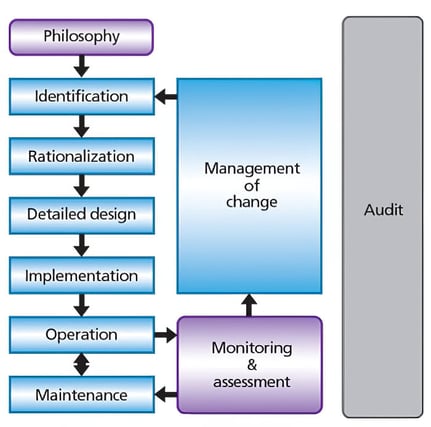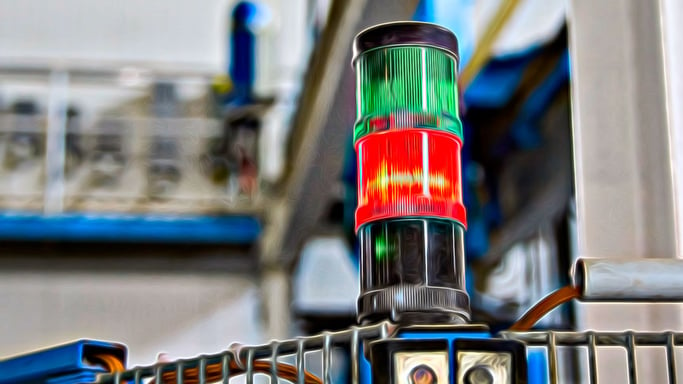This excerpt is from the September/October 2014 issue of InTech magazine and was written by Leila Myers of Yokogawa.
Although distributed control system (DCS) selection is one of the most important steps in the design of a new or upgraded process plant, some users now consider such a system a commodity and give its selection far less thought than it merits. The result is a generic control system that provides little more than the most basic control functions. This is a huge opportunity lost, because a control system that is optimized for a given application using relevant ISA standards is far more effective over its long life span.
One very practical element of this selection and configuration process is alarm management. In spite of dozens of articles and even whole books on the topic, this aspect of control system design is often ignored until the new DCS is installed and running—and driving the plant operators crazy trying to deal with a multitude of problems. Alarm management then becomes a matter of trying to squelch the noisiest problem, instead of the result of a carefully thought out strategy.
The far better approach is using the ANSI/ISA-18.2-2009 standard for alarm management as a practical guideline early in the DCS selection and specification stage. This may seem like an obvious approach, but in the real world it is far rarer than one would imagine. System integrators and companies providing control platforms do not always do a good job of showing users how to get the most out of the opportunity early in the design process, the best time to implement an alarm management strategy.
Most DCS platforms have a basic framework for the first line of alarm interface for control room operators, but that is far from what users need to build a systematic approach that supports a safe plant with effective operators. To fill that gap, a committee of experienced users, engineers, system integrators, and DCS suppliers developed the ANSI/ISA-18.2 standard with the primary goal of making process industries safer. This goal can be accomplished by implementing an alarm management system that emphasizes what is important to the operator and eliminates what is distracting and time consuming. ANSI/ISA-18.2 describes the alarm management process in terms of a life-cycle model (Figure 1)
 Figure 1. Alarm management is not a static process, and it needs to be adjusted to match changes in the process and other new operational practices. Regular audits coupled with change management procedures help avoid undocumented modifications made by operators that can have potentially serious consequences.
Figure 1. Alarm management is not a static process, and it needs to be adjusted to match changes in the process and other new operational practices. Regular audits coupled with change management procedures help avoid undocumented modifications made by operators that can have potentially serious consequences.
The life-cycle concept as expressed here creates a dynamic system, not a static one. As situations and needs change, the alarm management strategy can also change to stay current. Changes are administered with appropriate documentation and training to ensure that all involved benefit. After some years, the overall approach may have evolved a great deal, but all the information is retained in the system, so it is clear how and why modifications were made.
There are many DCSs running plants today that were implemented years ago with no alarm management life-cycle concept in place. Such systems usually started up with little or no strategy for alarm management beyond an attempt to make the most aggravating problems go away, so operators could get their work done.
Typically, many more alarms than needed were included in the initial installation, and over the ensuing years, system alarm configurations were changed without any tracking or recording. In addition, many advisory messages were included that were not really alarms, because operators could not or did not need to take any actions in response. The most annoying problems were squelched for the sake of the operators’ sanity, but the DCS was rarely systematically cleaned up. And as DCSs added more functionality, alarm management often became even more problematic.
A blessing and a curse
As DCS platforms gained sophistication, it became much easier for system architects to add alarming functions in far more areas. As a result, some DCS function blocks were given the ability to generate tens of alarms by default. Users had to disable some of these alarms, not always an easy process. As a result, there are many nuisance, duplicate, and unnecessary alarms in the existing systems that need to be investigated and possibly deleted—too many alarms only distract and stress operators, possibly causing them to miss important problems.
With this problematic history in mind, how should a company planning a DCS upgrade or new installation approach the situation to avoid these problems and ensure the most effective outcome? The ANSI/ISA-18.2 standard (with its associated technical reports 1 through 6) provides best practices, requirements, and guidelines that can improve the implementation from the start.
With increasing retirements among experienced operators and reduced employee head counts, many end-user companies no longer have in-house support systems, but DCS suppliers and system integrators can step in with the support and knowledge to make the new or existing DCS a safer system based on ANSI/ISA-18.2.
Click here to view the complete article on alarm management at InTech magazine.
About the Author
Leila Myers is a consulting engineer with Yokogawa's Global Strategic Marketing group, USMK, in Dallas, Tex. and is currently working on the advanced decision support strategy. Myers has more than 26 years of experience planning, implementing, and commissioning automation projects at various industries, such as oil and gas, chemicals, polymers, energy, food, and water treatment. Previously, she has been with Honeywell, Amoco/BP, and Vista Chemical Company. Myers has a B.S. and M.S. in chemical engineering from Ohio State University.




